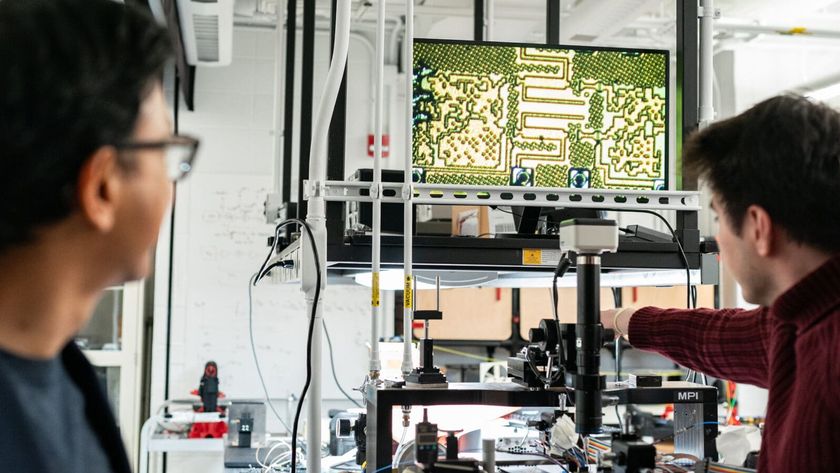
A new, extremely precise measure of Avogadro's number, a fundamental constant, could ensure solid footing for a new definition of the kilogram that does not rely on a single hunk of metal sitting in France.
Every junior high school chemistry student learned Avogadro's number, or 6.022 X 10 ^23, a huge value that dwarfs the number of stars in the universe. Because Avogadro's number defines how many atoms or molecules are in a mole of matter, each mole of a substance weighs a different amount depending on the substance in question. So, a single mole of water would weigh just 0.56 ounces (16 grams), while a mole of lead would weigh about 7.3 ounces (207.2 grams).
Scientists have tried to precisely measure Avogadro's number in the past, each time using a single silicon ball that weighs 2.2 pounds (1 kg). Because silicon crystallizes into a lattice with eight atoms for each repeating unit of the lattice, they can get at Avogadro's number by measuring the volume of each cubic cell. By knowing the ratio between the volume of the crystal and the volume each silicon atom occupies, the team can then deduce how many atoms are in the tiny sphere. [The 9 Most Massive Numbers in Existence]
In a new study, researchers calculated Avogadro's number with less than 20 atoms per billion uncertainty, an improvement from the 30 atoms per billion uncertainty they calculated in 2011, the team reported this week in the Journal of Physical and Chemical Reference. By correlating the two values and then averaging the result, the team came up with an even more accurate value of Avogadro's number — 6.02214082(11)x10^23, where the (11) represents the uncertainty.
Enter the kilogram
That, in turn, could help scientists define the kilogram. Right now, scientists define the kilogram based on a physical platinum-iridium ball in the International Bureau of Weights and Measures in France. But this tiny hunk of material may experience small changes in its mass as chemicals react with its surface.
Instead, scientists want to define the kilogram based on a fundamental constant of nature. In 2018, physicists plan to define the kilogram in terms of Planck's constant, a constant that relates to the fundamental action of particles on a quantum scale.
Sign up for the Live Science daily newsletter now
Get the world’s most fascinating discoveries delivered straight to your inbox.
"The absence of technologies to redefine the kilogram is the biggest impediment to a redefinition of the whole system of measurement units, which is expected to deliver even more solid foundations and reliability to precision measurements and to set the stage for further innovations in technology and science," Giovanni Mana, one of the lead researchers on the new paper, said in a statement.
However, scientists can't rush into a new definition.
"Prior to redefining the kilogram, we must demonstrate that the new realization is indistinguishable from the present one, to within the accuracy of the world's best balances," Mana said. "Otherwise, when changing from the present definition to the new one, all users in science, industry, and commerce must change the mass value of all the existing artifacts."
In order to make sure that the new standard fits seamlessly with the old one, they have to make sure that Planck's constant is incredibly precise. Avogadro's number, in turn, can be used to derive Planck's constant, creating a check on the new value of Planck's constant, Mana said.
Follow Tia Ghose on Twitter and Google+. Follow Live Science @livescience, Facebook & Google+. Original article on Live Science.

Tia is the managing editor and was previously a senior writer for Live Science. Her work has appeared in Scientific American, Wired.com and other outlets. She holds a master's degree in bioengineering from the University of Washington, a graduate certificate in science writing from UC Santa Cruz and a bachelor's degree in mechanical engineering from the University of Texas at Austin. Tia was part of a team at the Milwaukee Journal Sentinel that published the Empty Cradles series on preterm births, which won multiple awards, including the 2012 Casey Medal for Meritorious Journalism.


